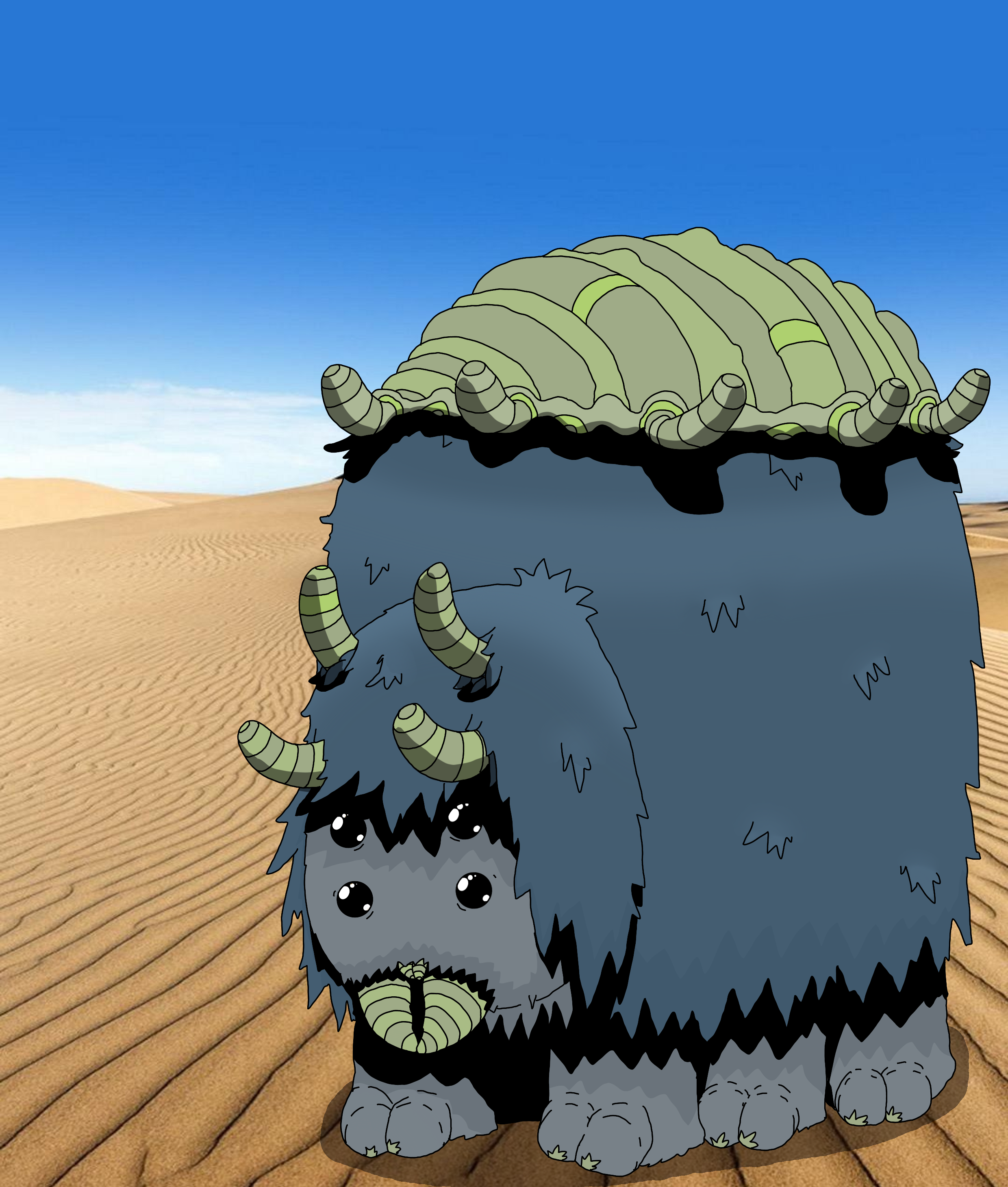Harrix (Har-rex)
Harrix are a race of six legged desert dwelling pack animals. They are able to bury themselves underground during dust storms.
Basic Information
Anatomy
Harrix are hardy animals. Their bones are thick and durable while their skin is strong and hard to pierce. They have large pincer like tusks that they use to eat. They also have four horn like appendages on their head that they use to feel vibrations in the sand when they are buried. Their back has a shell of thick skin made from the same material as their tusks and horns. When they bury themselves under the sand, they leave their shell exposed which seems to be able to allow them to breathe.
Genetics and Reproduction
Harrix take 18 months to fully develop before birth.
Growth Rate & Stages
An infant Harrix will stay close to their mother for the first year of their life, after that their baby fur will fall off, and their upper skin shell and horns will begin to develop. They reach sexual maturity after three years.
Ecology and Habitats
Harrix travel in packs in familiar migration patterns. During the hotter summer months they will usually take shelter in and around mesas and mountain ranges.
Dietary Needs and Habits
Harrix live mostly off of cactus and Desert Urchin.
Additional Information
Social Structure
Harrix travel in groups of around 10-20 Harrix.
Domestication
Harrix are hard to to train after their first year of life, most trainers attempt to capture young Harrix, or breed them themselves.
Uses, Products & Exploitation
Harrix meat is naturally greasy and sour, but in survival situations can be used for food. The primary use for Harrix, aside from labor, is their leather and fur.
Geographic Origin and Distribution
Harrix only seem to do well in the Orongo deserts. While they can survive in other environments, they seem to require Desert Urchin to survive long term.
Average Intelligence
Harrix are smart enough to avoid the dangers of the Orongo dessert. Often traveling in groups, if they are attacked they will encircle around their young as a pack and protect them.
Perception and Sensory Capabilities
Harrix have four black eyes that give them strong close range vision, but weak long range sight. They are also able to feel vibrations through their feet pads while above ground, and while resting below they can feel them much more precisely through their horns.
Lifespan
Harrix in the wild will live for about 20 years, but kept healthy and watched over can live well over 30
Average Height
5.5-5.9Feet
Average Weight
600-800 Pounds
Average Length
4-5 Feet
Average Physique
Harrix are often hearty, most can walk for hours or days but are not too fast. As a pack animal they are better suited for heavy weight over a long period of time instead of speeding across the desert.
Body Tint, Colouring and Marking
In terms of fur, harrix are shades of blue-gray, but rare ones are more purple in color. Their tusks and horns are often light green-yellow or tan, infant harrix have white tusks which darken a but over a time. Their skin is usually a dark gray.
Geographic Distribution



Comments